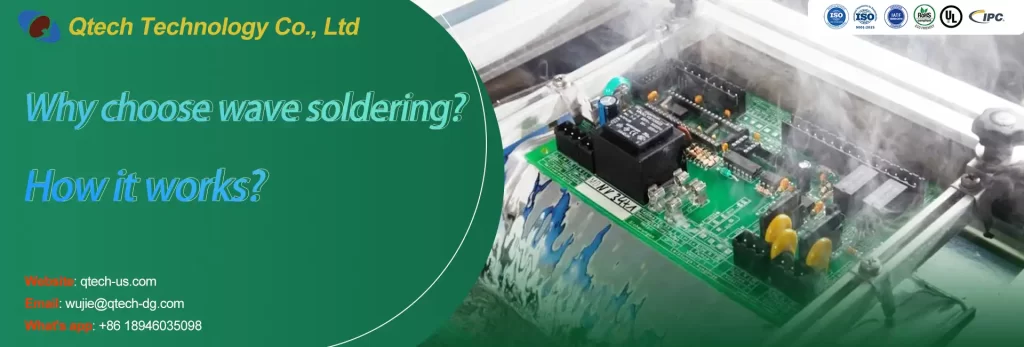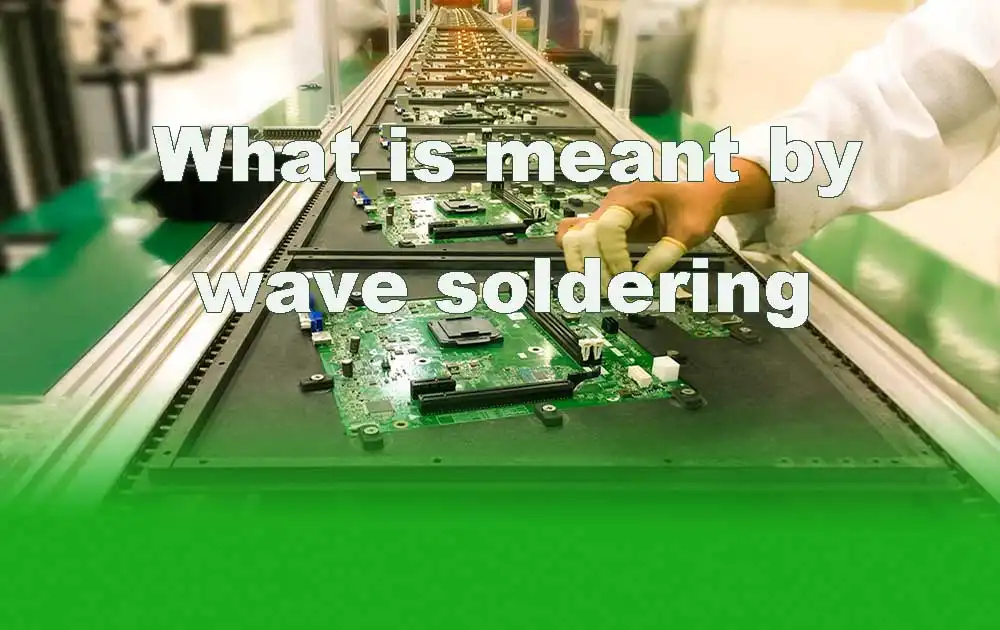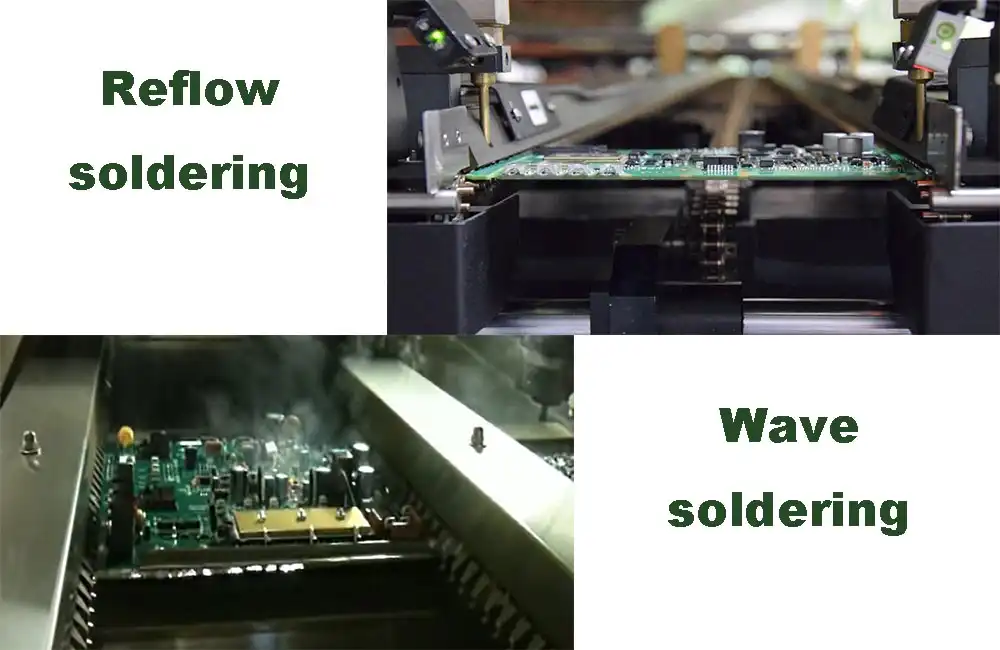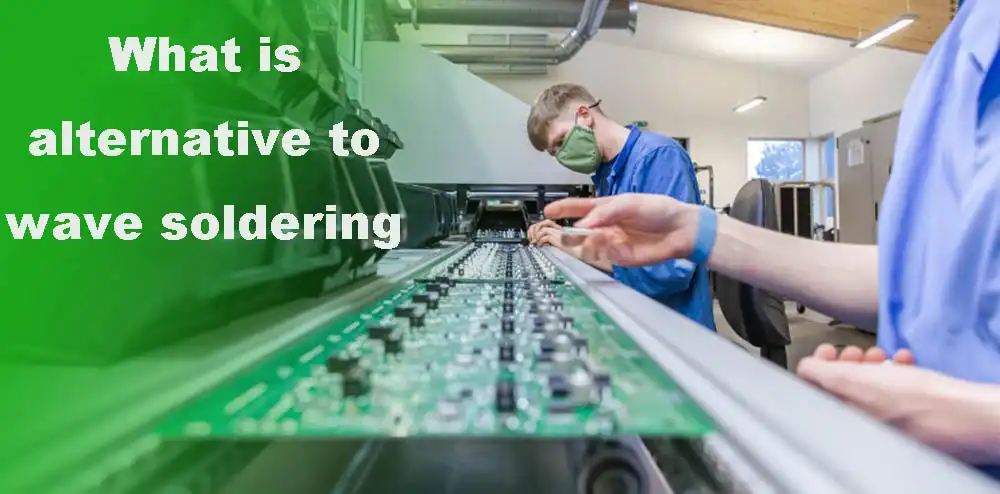
Wave soldering is to make the soldering surface of the PCB directly contact with high-temperature liquid tin to achieve the purpose of welding. High-temperature liquid tin maintains a beveled surface, and the liquid tin is formed a wave-like phenomenon by a special device , so it is called “wave soldering”, and its main material is a solder bar.This article will introduce information about wave soldering in PCBA process.

Wave soldering is a solder paste application method that uses the wave effect to move solder paste onto the surface of a printed circuit board (PCB). The wave moves solder paste over the surface of PCBs at high temperatures and pressure. It’s a quick, simple way to join copper wires together that works well for many applications. The heat source for wave soldering can be a torch or induction coil.
Wave soldering requires special equipment like high voltage transformers and capacitors which are usually available at electronic supply stores or even online suppliers such as Sparkfun Electronics Inc.
Wave soldering is mainly used to meet the need for joining two or more different metals without using fusion welding. Some advantages of Wave soldering are as follows:
✦ Excellent process control.
✦ The ability to process high volume, large boards.
✦ Wave soldering is a good way to solder PCBs at high speed and with low costs.
✦ Lead-free solder can be used.
✦ Fewer defects are possible.
✦ The process also works well when joining flat surfaces together like sheets or panels, which will help save time when creating complex designs with limited space constraints.
Wave soldering is an excellent technique for joining copper wires, but it does have its downsides. The most important things to remember about wave soldering is that you need to have a high level of technical skill and manual dexterity, as well as the ability to use the right materials.
Wave soldering machines are used to make small as well as fast repairs on boards. A hot plate is the primary element of a wave soldering machine which provides warmth to your solder tip. The hot plate has an adjustable temperature setting that allows you to control how fast it heats up, which will affect how long it takes for your board or wires to become sufficiently heated before you start soldering them together.
Soldering involves two steps: melting and fluxing. Melting mean heating up metal so that it becomes liquid (which then flows freely). Fluxing is what brings things together by applying a chemical substance that prevents oxidation or corrosion on both surfaces being joined together.
Wave soldering machines have been designed so that they can be used with a variety of connections such as flatness, angle or roundness tolerance. The machine needs only one operator who feeds materials into the machine (either manually or mechanically), which then moves along its path until it reaches an area where it will apply solder onto another part using an attachment called “wet sanding” tool. Wave soldering machines are used for high speed production, where the electrical boards and circuit boards of electronic products need to be connected quickly.
Heat and vibration are used in Wave soldering to join different materials together. Wave solders are categorized into vibratory and electromagnetic solders.
A vibratory iron creates a joint by oscillating back and forth at a high frequency, while an electromagnetic iron uses an electromagnetic field to generate heat that causes the solder to melt together when it comes into contact with both surfaces of your project.

Reflow Soldering is a process that is used to bond components together, or repair broken electronic devices. It is called “reflow” because this process requires a reflow oven, which can be either an electric heating element or a gas burner. The process uses a special hot-plate, which can be adjusted to the desired temperature, to heat the surface of a semiconductor wafer (substrate) so that solder can flow onto it.
Wave soldering is also known as vibratory soldering or vibratory wave soldering because it involves using vibrations from an oscillating electromagnet. The process works by heating one piece with an electric current, which causes it to expand and contract. This makes it easier for heat to reach the other side of your work piece and melt together all your excess solder so you don’t have any wasted material left over in your joint after welding is complete.
As Wave soldering does not require an oven so it is faster but reflow soldering has better heat dissipation ability. It’s also used when you want to connect two PCBs together.

There are many alternatives to wave soldering technologies. Some of the most popular ones include laser-based selective soldering, automatic optical inspection and electrode coating.
● Laser-based Selective Soldering
The laser-based selective soldering method uses a laser to selectively heat the solder. This allows you to join components without using any paste or flux.
● Automatic Optical Inspection
The Pulsed Laser Deposition (PLD) method of optical inspection is a technique that uses a laser to etch an image onto the surface of a component. As the name suggests, this process involves pulsing the laser beam in order to create fine lines on parts. Afterward, these etched areas are inspected by means of another type of light source that can detect defects or damage in the resulting patterned layer.
● Electrode Coating
Electrode coating is a process that applies a thin layer of metal to the surface of an electrode. It’s used to prevent oxidation and corrosion, improve the quality of solder joints, and enhance solder ability. This process can also be used on other materials such as glass or plastic to create more durable connections between parts.
● Laser-Assisted Thermal Processing (LATT)
The laser-assisted thermal processing (LATT) is a non-contact process that uses a laser to heat the PCB, and the vacuum pump to suck away the heat. LATT is a more expensive option than wave soldering because of its cost, but it allows for greater flexibility in terms of positioning and design.
The temperatures you work with are dependent on the material you are using for your joint. The higher temperature, the more effective it will be. The wave soldering iron can range from 200°C to 600°C, depending on the type of metal being worked with.
Wave soldering is an established technology for connecting electronic components. It requires that two surfaces be exposed to a high-frequency electric current which causes them to fuse together at the point of contact. Wave soldering can be used on many different substrates including gold and silver, plastics, glass and ceramics among others.